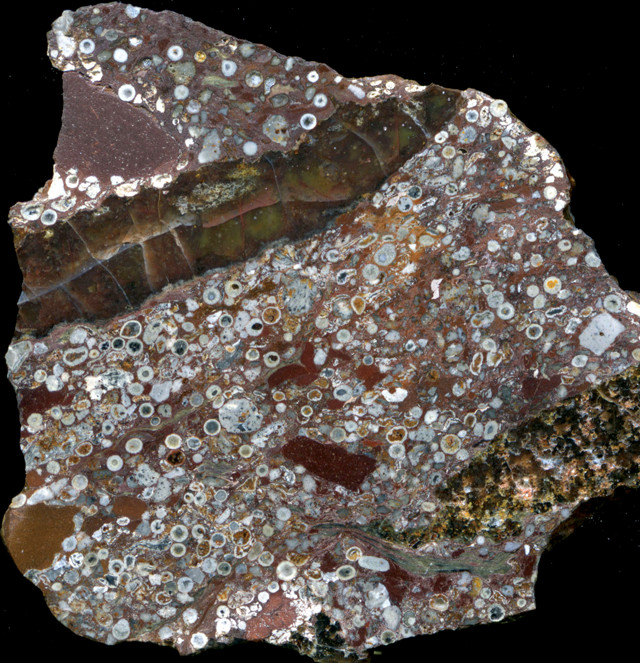
by Julia Rosen Thursday, May 14, 2015

Tiny spherules, like those seen in this rock found in Western Australia, form when vaporized rock from a meteorite impact condenses into small, round particles. Credit: Oberlin College photo/Bruce M. Simonson.
Some of the oldest scraps of continental crust on Earth cling to the southern tip of Africa and the western edge of Australia. In both places, geologists have found rock layers rich in tiny particles called spherules. Scientists think spherules form when meteorites strike the planet, vaporizing surface rocks that then condense into small droplets, blanketing the surrounding landscape. Now, research published in Geology confirms the extraterrestrial origin of a 2.5-billion-year-old layer of spherules in South Africa, which scientists say was produced by a bolide at least as large as the one that doomed the dinosaurs.
The researchers, led by Bruce Simonson of Oberlin College, drilled cores in South Africa’s Kuruman Iron Formation and measured the chemical composition of the spherule-bearing layer. They found it contained high levels of iridium and other platinum group elements that often accompany meteorite impacts. The scientists also noted that the chemical fingerprint of this layer closely matched that of a spherule layer in the Hamersley Basin in Western Australia, suggesting both may have formed during a single impact that occurred when the continents were connected.
The amount of iridium in the layer implies that the impactor probably measured more than 10 kilometers across. This exceeds the suspected size of the Chicxulub meteorite that altered global climate 66 million years ago and precipitated the demise of the dinosaurs. But the lack of any apparent changes in depositional environments before and after the 2.5-billion-year-old impact in South Africa suggests that this event did not have a comparable effect on the Archean climate. The researchers suggest that extraterrestrial impacts may only significantly affect global climate when Earth is already close to a tipping point.
© 2008-2021. All rights reserved. Any copying, redistribution or retransmission of any of the contents of this service without the expressed written permission of the American Geosciences Institute is expressly prohibited. Click here for all copyright requests.